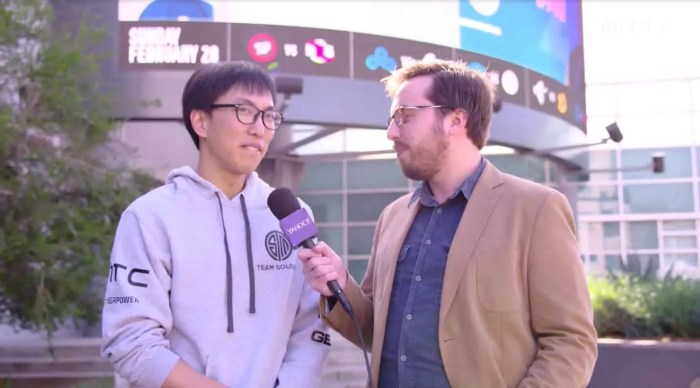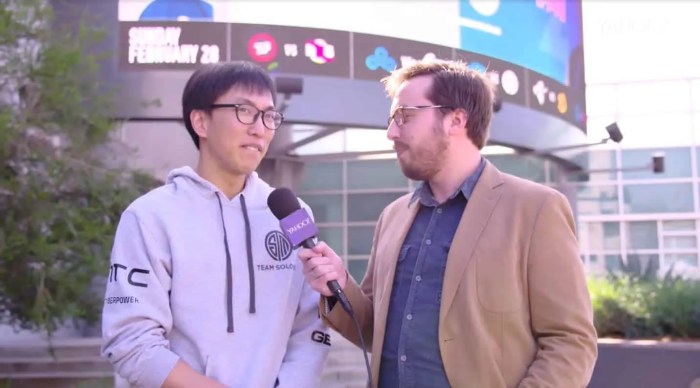Esports Journalism is exploding! Forget dusty old newspapers; we’re talking about a dynamic field covering the billion-dollar world of competitive gaming. From analyzing pro-level strategies to interviewing the next big streamer, esports journalism blends traditional reporting with a deep understanding of gaming culture. This isn’t just about who won the match; it’s about the stories behind the players, the teams, and the rapidly evolving esports landscape.
This exploration dives into the unique challenges and incredible opportunities shaping this exciting career path.
Defining Esports Journalism

Esports journalism, while sharing some DNA with its traditional sports counterpart, carves its own unique niche in the media landscape. It’s the practice of reporting, analyzing, and commenting on the competitive video game world, encompassing everything from professional leagues and individual players to the business side of esports and its burgeoning culture. The key difference lies in the medium – digital platforms reign supreme, demanding a different skillset and approach compared to the established print and broadcast models of traditional sports.Esports journalism thrives on the immediacy and interactivity of the digital age.
Unlike traditional sports, which often rely on post-game analysis and delayed reporting, esports journalism frequently operates in real-time, demanding quick turnaround times and a deep understanding of the ever-evolving meta and gameplay dynamics. The digital nature also fosters a more direct connection with audiences, often blurring the lines between journalist and fan through social media engagement and live streaming coverage.
Types of Esports Journalism Content
Esports journalism encompasses a diverse range of content formats, mirroring and expanding upon the traditional sports media model. This variety ensures engagement with different audience segments and caters to various consumption preferences.News articles provide timely updates on significant events within the esports world, such as roster changes, tournament announcements, and major business deals. Match reports offer in-depth analyses of completed matches, dissecting strategies, player performances, and key moments that shaped the outcome.
Interviews with players, coaches, and industry figures provide insights into the personalities, motivations, and strategies driving the competitive landscape. Opinion pieces offer informed commentary and analysis on current trends, controversies, and debates within the esports community. Beyond these core formats, esports journalism also includes features, documentaries, podcasts, and live streaming commentary. Each format plays a unique role in delivering information and fostering engagement with the esports audience.
Ethical Considerations in Esports Journalism
The ethical considerations in esports journalism largely mirror those in traditional sports journalism, but with some unique nuances. Accuracy and fairness remain paramount, requiring journalists to verify information meticulously and avoid bias in reporting. Maintaining journalistic integrity, especially when dealing with the intense emotional stakes and passionate fanbases in esports, is crucial. Transparency in relationships with teams, organizations, and sponsors is essential to avoid conflicts of interest.
The rapid pace of esports and the potential for misinformation spreading through social media require extra vigilance in fact-checking and sourcing. While the lines between journalist and fan can sometimes blur in the digital environment, maintaining professional objectivity is paramount to preserving credibility. Addressing issues such as potential conflicts of interest arising from influencer marketing and sponsorship deals is a particularly important ethical consideration unique to the digital nature of esports journalism.
The Landscape of Esports Journalism

Esports journalism has exploded in recent years, mirroring the meteoric rise of competitive gaming itself. What was once a niche interest covered by gaming blogs and enthusiast websites has transformed into a multifaceted industry with dedicated news outlets, prominent journalists, and a diverse audience. This evolution reflects not only the growth of esports but also a shift in how we consume and understand competitive gaming as a legitimate sport and entertainment phenomenon.Esports journalism today covers a vast spectrum, from breaking news and match analysis to player profiles and in-depth investigations into the business side of the industry.
The landscape is dynamic and competitive, with various outlets vying for attention and establishing their unique niches.
Major Esports News Outlets and Their Target Audiences
The esports news landscape is populated by a range of organizations, each catering to a specific audience. Some focus on broad coverage across multiple games and regions, while others specialize in a single title or a particular competitive scene. For example, ESPN’s esports coverage targets a general sports audience, introducing them to the competitive gaming world, while websites like Dot Esports or HLTV.org cater to dedicated fans of specific games like League of Legends or Counter-Strike, respectively.
Smaller, independent outlets often focus on niche communities or specific regions, offering more specialized and in-depth coverage. This diverse range of outlets ensures that there’s a source of information for everyone, from casual viewers to hardcore esports enthusiasts.
The Evolution of Esports Journalism
In its early days, esports journalism was largely driven by passionate fans and community members who created websites and forums to discuss matches and players. Coverage was often informal and lacked the professional standards of traditional sports journalism. However, as esports grew in popularity and viewership, so too did the professionalism of its journalism. The rise of dedicated esports news organizations, the influx of experienced journalists from traditional sports media, and the increasing sophistication of esports analytics all contributed to this evolution.
The shift from amateur blogs to established news outlets marked a significant turning point, bringing greater legitimacy and credibility to the field. Today, esports journalism employs advanced statistical analysis, incorporates compelling storytelling techniques, and utilizes various multimedia formats to engage audiences.
Examples of Successful Esports Journalism Pieces and Their Impact
Several pieces of esports journalism have significantly impacted the industry and its perception. For instance, investigative reports exposing issues such as player exploitation or organizational misconduct have led to crucial reforms and increased accountability. Detailed analyses of tournament strategies or player performances have enhanced fan understanding and appreciation of the competitive landscape. Well-crafted player profiles that go beyond basic statistics and delve into personal narratives can humanize esports athletes and foster stronger connections with fans.
These examples highlight the power of esports journalism to not only inform but also to influence and shape the industry. A strong example would be the in-depth reporting on the allegations of player abuse in certain esports organizations, leading to investigations and changes in team management practices. This demonstrates how quality esports journalism can be a catalyst for positive change within the competitive gaming world.
Detailed FAQs: Esports Journalism
What’s the salary range for esports journalists?
It varies wildly based on experience, outlet, and location, but entry-level positions might start around $40,000, while experienced journalists can earn significantly more.
Do I need a journalism degree to work in esports journalism?
While a journalism degree is helpful, it’s not always required. A strong writing portfolio and demonstrable knowledge of esports are often more important.
How do I break into esports journalism?
Start by building a portfolio of writing samples, networking with esports organizations and journalists, and contributing to smaller esports websites or blogs.
What are some common mistakes new esports journalists make?
Lack of game knowledge, failing to verify information, and ignoring the community’s voice are common pitfalls.
